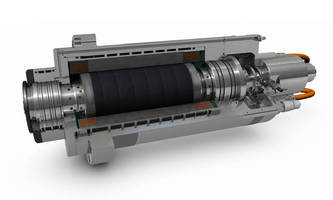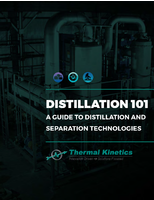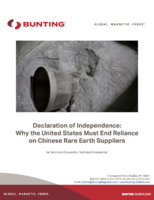Siemens Offers Spindle Solutions for Machine Tool Applications

The most critical part of any metal cutting machine is the spindle that drives the cutting tool. With its broad product line, featuring motorized or separately driven spindles, spindle motors and built in high torque or high speed applications, Siemens is a leader in offering standard or custom solutions to machine tool OEM's and end users alike.
With higher speeds, greater material removal rates and the challenges of machining new materials, new design approaches are needed. While aerospace and automotive have led the way in creating this demand, other markets such as medical, appliance, optics, printing , woodworking and composites have all seen the landscape change for machine spindle requirements.
Today's machine tools are equipped with single or multiple spindles in two basic designs. The first are motorized, direct drive spindles, where the motor is integral with the spindle and the entire assembly, including bearings, motor, drawbar and tool retention, are all in one neat cartridge. The second are separately driven spindles where the spindle itself is driven by a separate motor. The drive mechanism can be belt, gear box or coupling for direct drive. The spindle itself houses the drawbar, tool retention system and sometimes tool coolant. In the case of directly coupled spindles, the motors can have hollow shafts with the coolant rotary union mounted to the back of the motor. In conjunction with its Weiss Gmbh subsidiary, Siemens is the only company that can offer spindle motors of various types, motorized spindles in either standard or custom designs and separately driven spindles. Add to these a complete line of drive and control components and Siemens has the advantage of providing a complete turnkey solution for machine designers and end users alike.
Motorized spindles are fast becoming the norm in advanced machine tool design, as their compact configuration, high speed machining performance, superior accuracy and long service life are outstripping the conventional belt driven spindles. Because all functions are built into one compact cartridge or block, these spindles offer the machine designer more flexibility, less space and a higher degree of performance. Using synchronous motor technology, these spindles are more efficient, cover a broader speed, power and torque range and can be used for more precise applications than ever before.
In contrast, separately driven spindles are indeed in demand in the lower-to-medium performance segment of the market. These spindles are in great demand, particularly among Asian builders. They are suitable for all kinds of machining work such as drilling, milling, turning and grinding. Spindles are chosen based on the customer applications according to speed, power and torque. The price contrast with motorized spindles is often significant. According to Claus Peter Lehnert, Managing Director of Weiss in Schweinfurt, Germany, "For machine tool manufacturers, these spindles are highly flexible in terms of handling and can be easily adapted to the machine. Since the motor is outside the spindle, it permits ultra-streamlined designs and can be easily integrated into all conceivable machine concepts." Using Siemens drive motors can make the process that much easier with a wide variety of motor types and sizes. Synchronous, asynchronous, solid or hollow shaft, air or water cooled units are all available. Siemens also offers simple rotor-stator sets for builders wishing to build their own motorized spindles.
Common to both types of spindles is the importance of bearing selection. Regardless of the type or cost of the spindle, the better the bearing quality, the better the performance of the spindle. As a leading innovator, Weiss uses either angular contact ball bearings or a combination of these with cylindrical roller bearings. According to Lehnert, "Thanks to our thirty years of experience, we know exactly which bearing to use for any specific purpose." In addition to rolling element bearings, spindles with hydrodynamic or hydrostatic bearings can also have advantages in certain applications such as drilling piston wrist pin holes, where good surface finish is required, or on grinding machines where high precision and good finish are required.
For many machine builders, the freedom to pursue individual design is an important part of their drive solutions. The motivation to pursue an individual construction is often based on the desire to optimize a drive solution perfectly matched to the intended machine concept. Weiss engineers design more than 200 custom spindle solutions annually for use in various machine concepts all over the world.
In contrast to other manufacturers who claim that "high speed" is 15,000 RPM, Weiss spindles can be built to speeds as high as 80,000 RPM. On typical machine tools, however, especially those used in milling, speeds generally run in the range of 10,000 RPM to 24,000 RPM. Many machine tool builders limit their spindle speeds on separately driven spindles to 12,000 RPM. With optimized bearings, proper lubrication and high quality drive belts, speeds up to 15,000 RPM can be achieved with power of 30 Kw and torque of 150 Nm. This is an SK40 size spindle. With an SK50 size spindle, it is possible to achieve the same speed with up to 50 Kw and 400 Nm torque.
This is where motorized spindles have the advantage over those that are separately driven. The limitation on motorized spindles is simply the motor design and the rating of the bearings. A typical motorized spindle will have a maximum speed of 18,000 RPM. With different bearings and motor, speeds of 24,000 RPM are achievable with power and torque sufficient to machine softer materials such as aluminum and composites. Weiss limitations are restricted only by the imagination of the machine tool builder. Spindles up to 167 Kw (225 HP), 3280 Nm (2420 lb-ft) and 80,000 RPM have been produced. Weiss offers solutions for nearly all machine tools where the power characteristics can be optimally tuned to the application.
Of course, a product is only as good as its service support. Siemens Weiss Spindle Service refers to a service concept unmatched elsewhere in the global machine tool industry. The SWSS concept bases itself on two pillars: a worldwide service network and individually customizable service offerings. Drawing on successful collaboration between Siemens and Weiss, each individual service concept is created to address one central goal. To support our machine builders and their many diverse customers, repair facilities have been located in industrialized areas such as Brazil, United States, England, Germany, Italy, India and China. All are equipped to handle repairs from the simplest component replacement to the most complex rebuilds.
With highly skilled engineers and craftsman, world class designs and service, Siemens Weiss is a logical choice for all machine spindle requirements.
For more information, please contact:
SIEMENS ENERGY & AUTOMATION
MOTION CONTROL BUSINESS
390 Kent Avenue
Elk Grove Village, IL 60007
Phone: 847-640-1595
Fax: 847-437-0784
Web: www.SiemensCNC.com
Email: SiemensMTBUMarCom.sea@siemens.com
Attention: John Meyer, Manager, Marketing Communications




